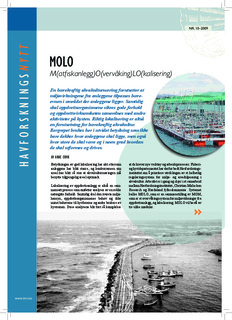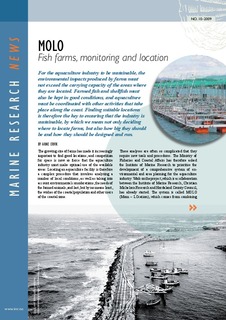| dc.contributor.author | Ervik, Arne | |
| dc.date.accessioned | 2010-03-22T15:22:40Z | |
| dc.date.issued | 2009 | |
| dc.identifier.issn | 0804-5496 | |
| dc.identifier.issn | 0808-1522 | |
| dc.identifier.uri | http://hdl.handle.net/11250/115329 | |
| dc.description.abstract | For the aquaculture industry to be sustainable, the environmental impacts produced by farms must not exceed the carrying capacity of the areas where they are located. Farmed fish and shellfish must also be kept in good conditions, and aquaculture must be coordinated with other activities that take place along the coast. Finding suitable locations is therefore the key to ensuring that the industry is sustainable, by which we mean not only deciding where to locate farms, but also how big they should be and how they should be designed and run. | en |
| dc.format.extent | 3317683 bytes | |
| dc.format.extent | 956142 bytes | |
| dc.format.mimetype | application/pdf | |
| dc.format.mimetype | application/pdf | |
| dc.language.iso | eng | en |
| dc.publisher | Havforskningsinstituttet | en |
| dc.relation.ispartofseries | Havforskningsnytt | en |
| dc.relation.ispartofseries | Nr. 10 - 2009 | en |
| dc.relation.ispartofseries | Marine research news | en |
| dc.relation.ispartofseries | No. 10 - 2009 | en |
| dc.title | MOLO - M(atfiskanlegg)O(vervåking)LO(kalisering) : MOLO - Fish farms, monitoring and location | en |
| dc.type | Working paper | en |
| dc.subject.nsi | VDP::Agriculture and fishery disciplines: 900::Fisheries science: 920::Aquaculture: 922 | en |
| dc.source.pagenumber | 2 s. | en |

